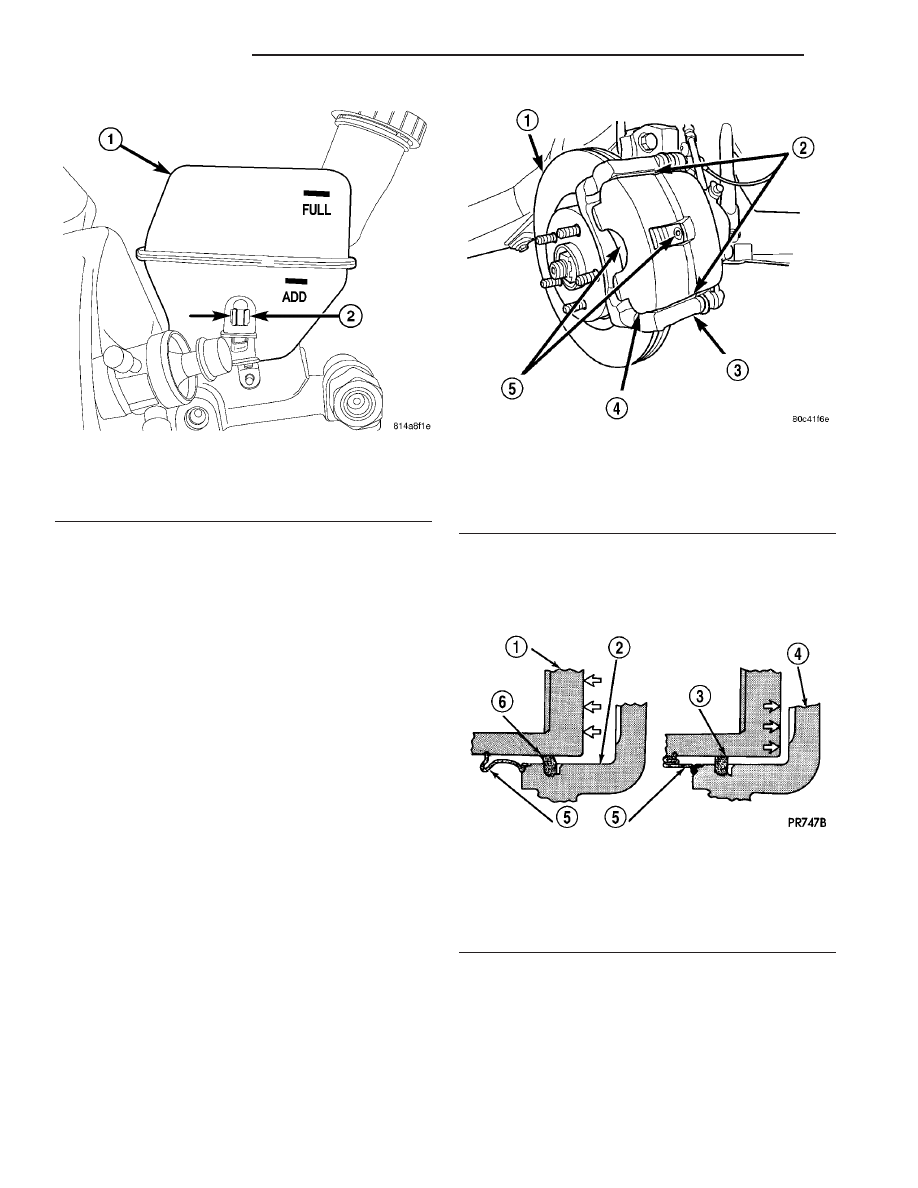Chrysler PT Cruiser. Manual - part 415

INSTALLATION
(1) Align the brake fluid level switch with its
mounting hole on the left side of the master cylinder
brake fluid reservoir. Push the switch into the fluid
reservoir
until
the
switch
retaining
tabs
are
expanded on the other side of the reservoir, locking it
in place (Fig. 5) (Fig. 6).
(2) Connect the brake fluid level switch wiring
connector (Fig. 4).
HYDRAULIC/MECHANICAL
DESCRIPTION
DESCRIPTION - DISC BRAKES (FRONT)
Each front disc brake assembly consists of the fol-
lowing components (Fig. 7):
• Caliper - single-piston, floating type
• Caliper adapter
• Shoe and lining assemblies
• Rotor
The caliper is a one-piece casting with the inboard
side containing a single piston cylinder bore. The
front disc brake caliper piston, is manufactured from
a phenolic compound. The outside diameter of the
caliper piston is 57 mm.
A square-cut rubber piston seal is located in a
machined groove in the caliper cylinder bore. This
seal provides a hydraulic seal between the piston and
the cylinder wall (Fig. 8).
A rubber dust boot is installed in a groove in cyl-
inder bore opening and in a groove in the piston (Fig.
9). The boot prevents contamination in the bore area.
Fig. 6 Fluid Level Switch Retaining Tabs -
Continental Teves
1 - RESERVOIR
2 - FLUID LEVEL SWITCH RETAINING TABS
Fig. 7 Front Disc Brakes
1 - BRAKE ROTOR
2 - ABUTMENT SHIMS
3 - DISC BRAKE ADAPTER
4 - CALIPER
5 - BRAKE SHOES (PADS)
Fig. 8 Piston Seal Function
1 - PISTON
2 - CYLINDER BORE
3 - PISTON SEAL BRAKE PRESSURE OFF
4 - CALIPER HOUSING
5 - DUST BOOT
6 - PISTON SEAL BRAKE PRESSURE ON
5 - 12
BRAKES - BASE
PT
BRAKE FLUID LEVEL SWITCH (Continued)